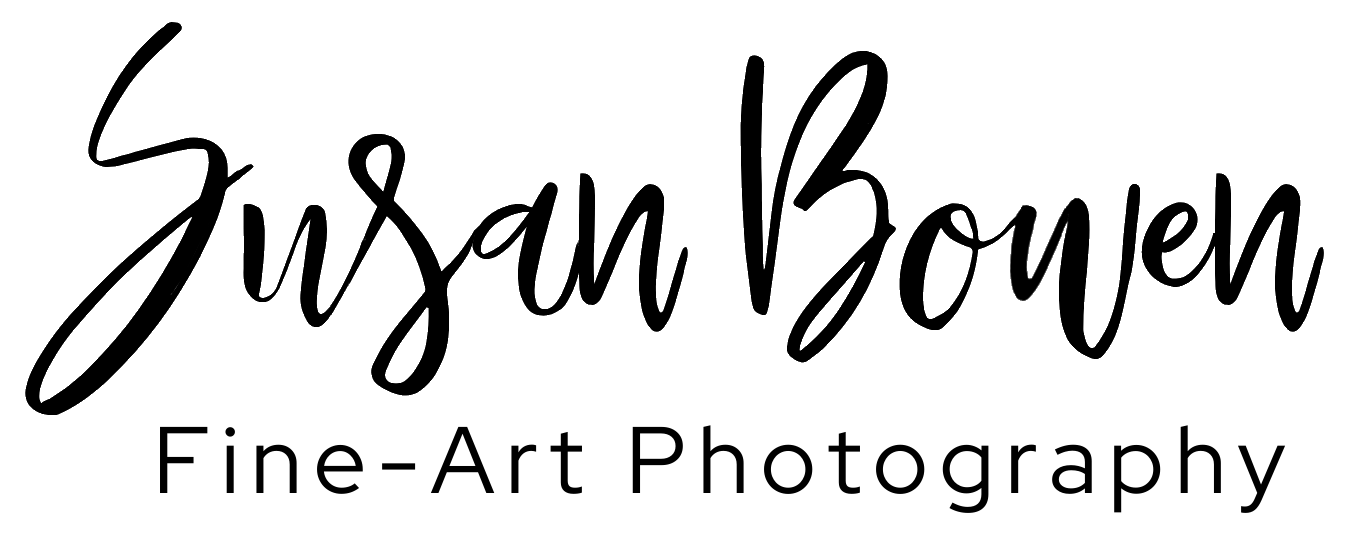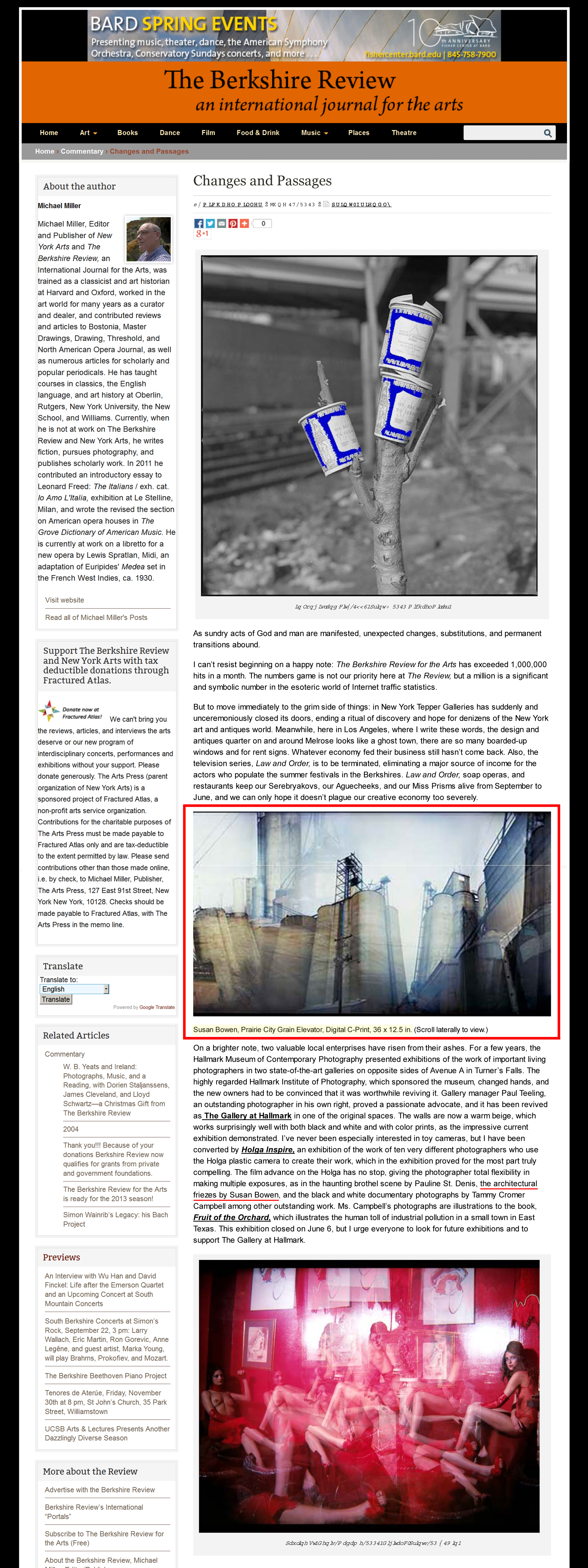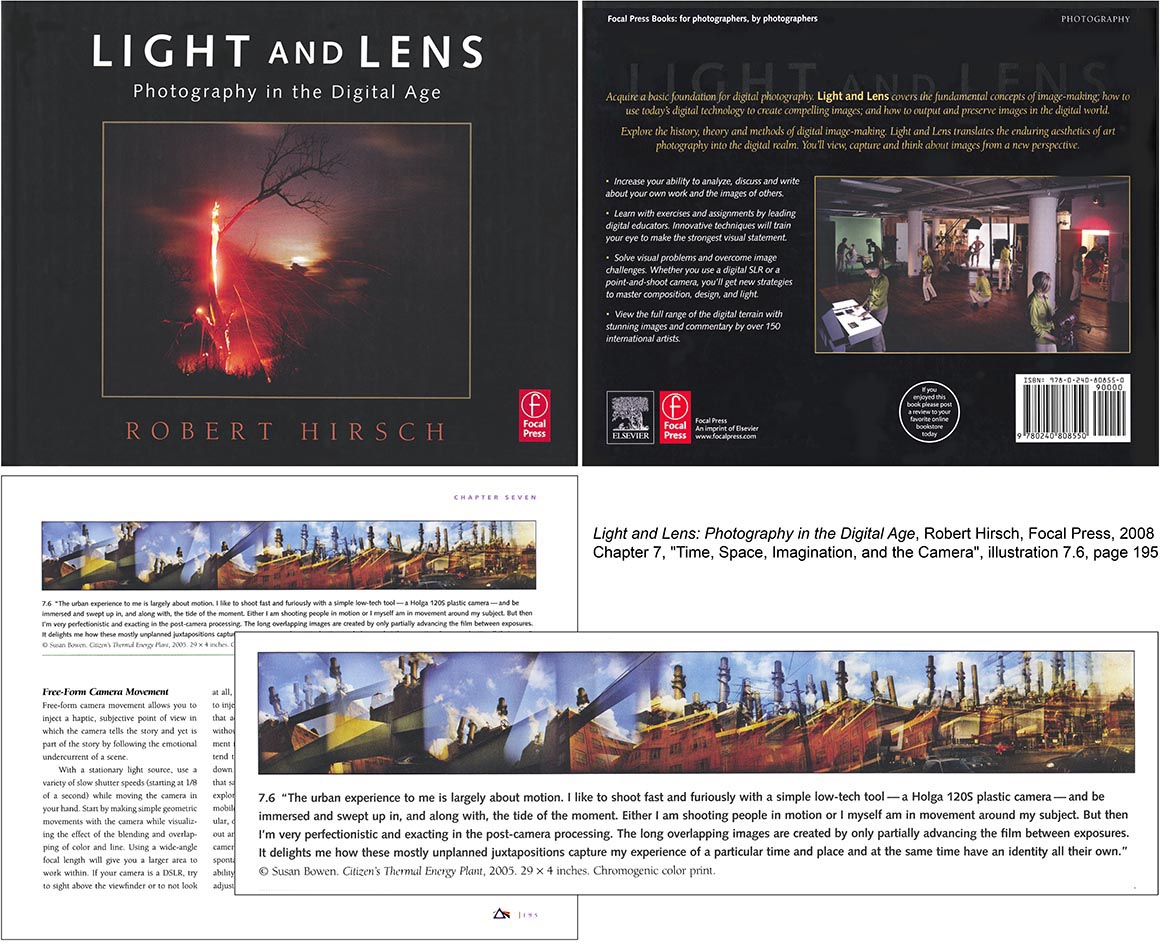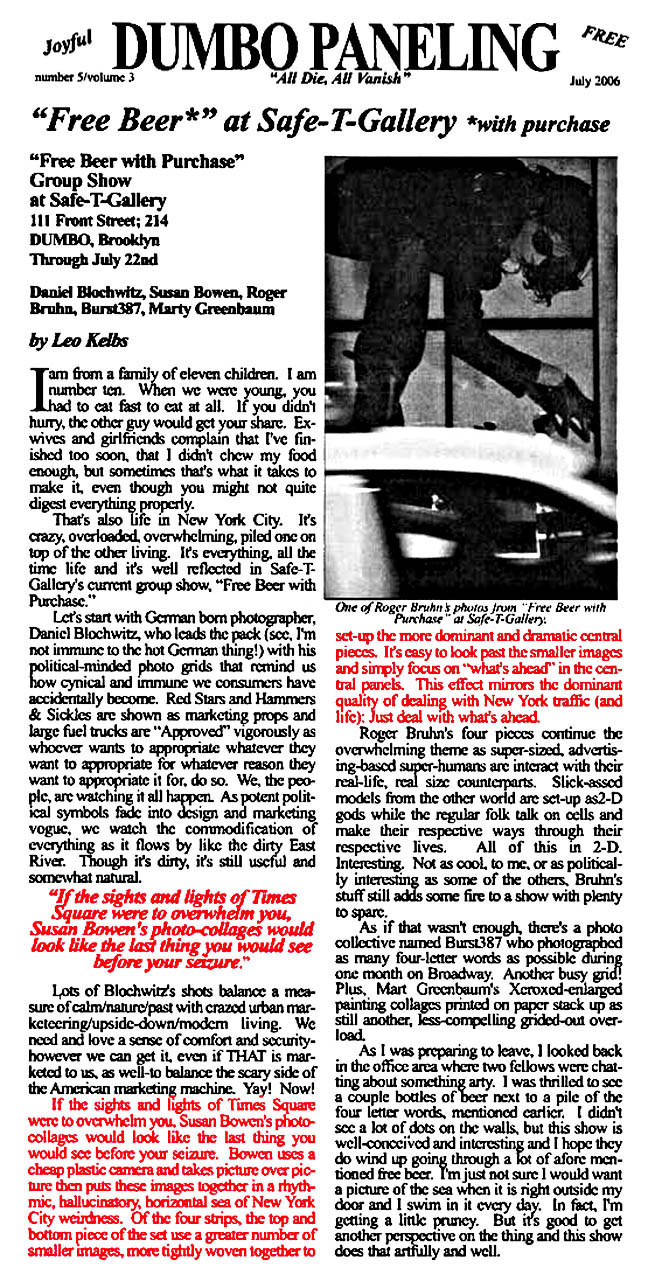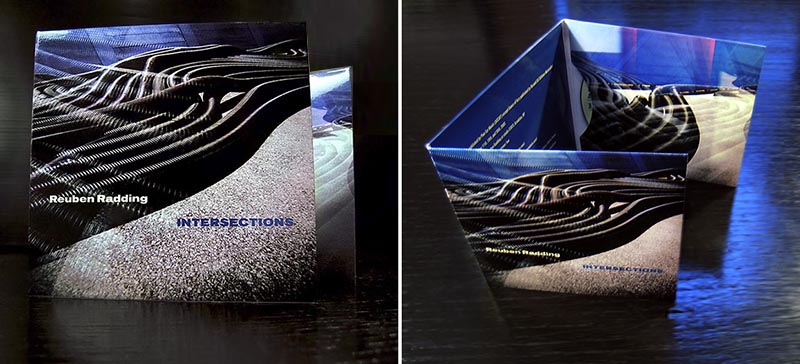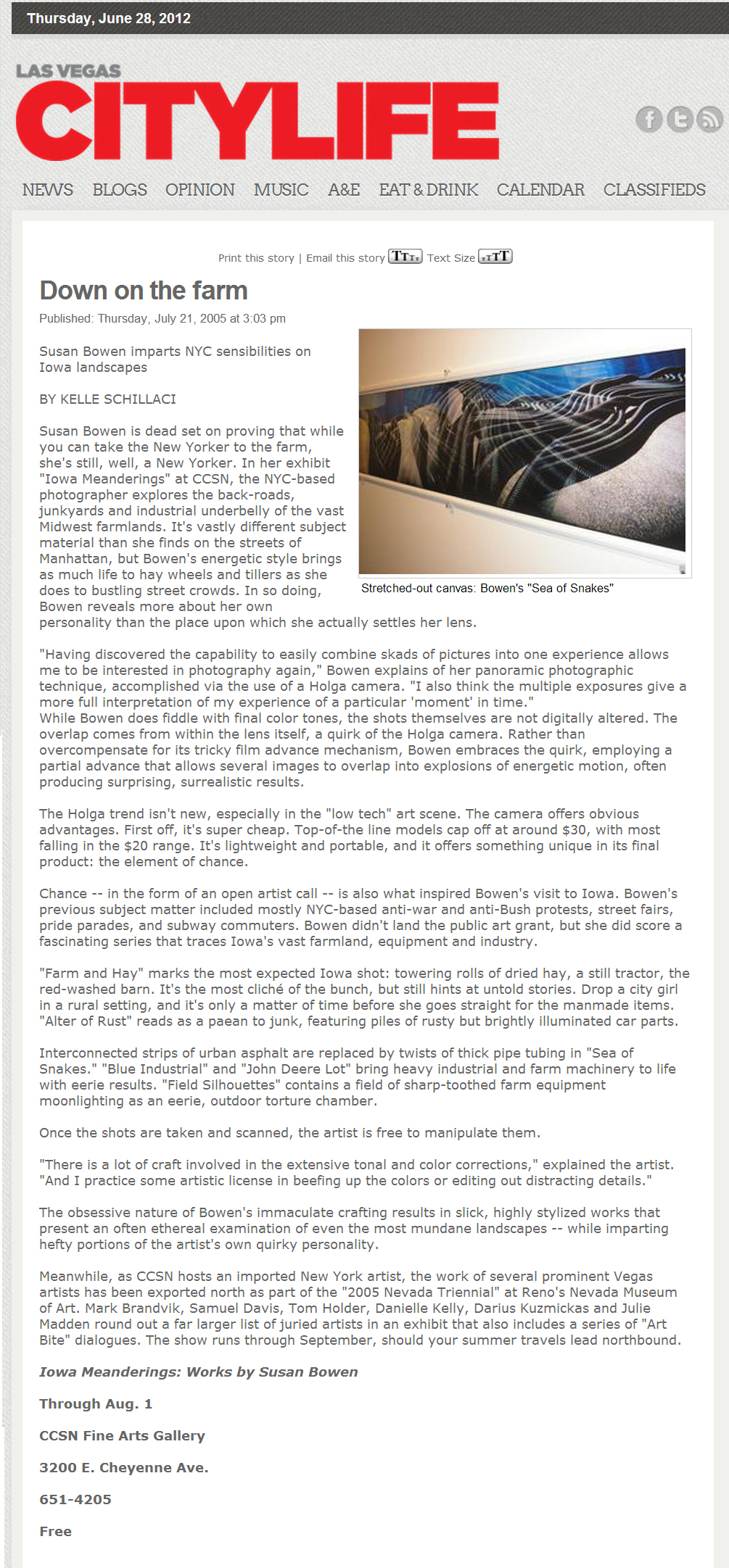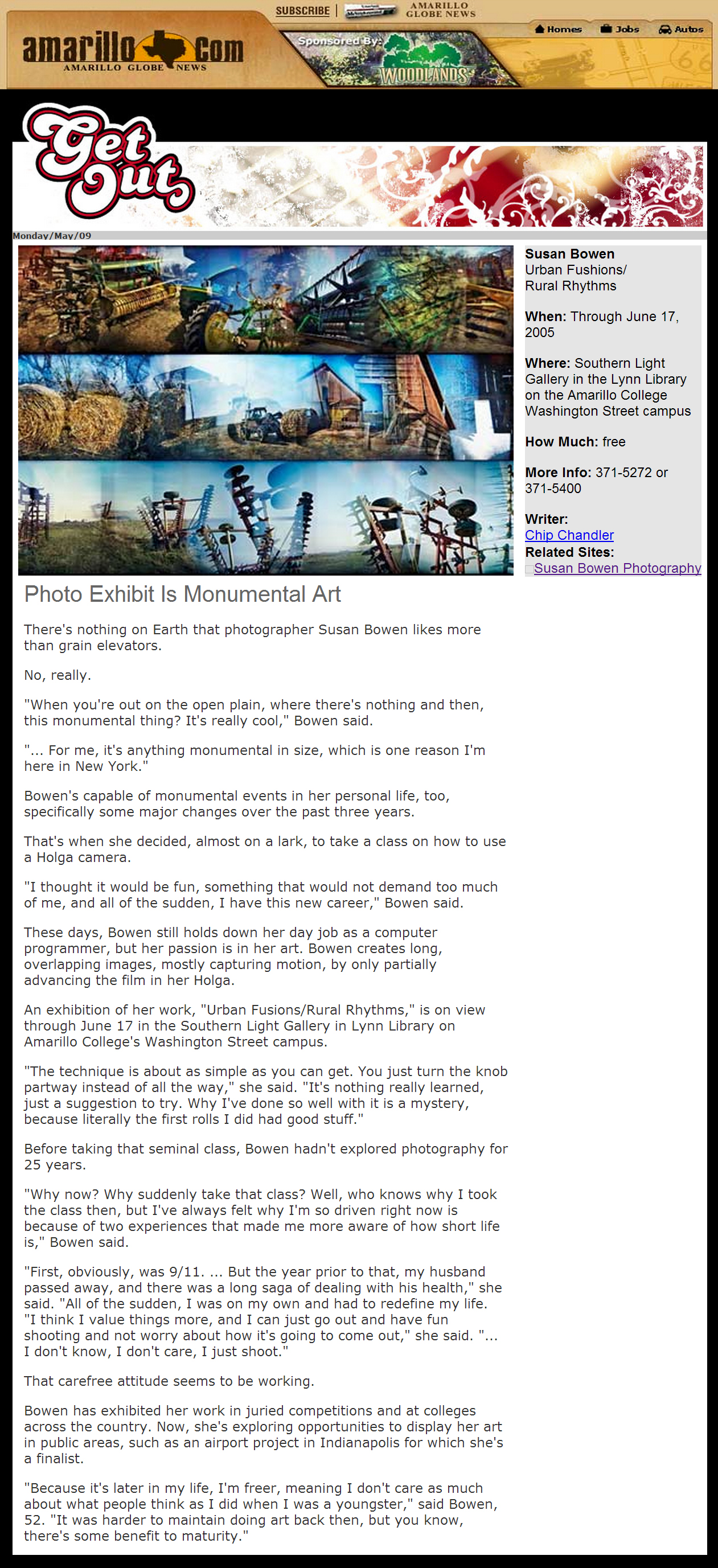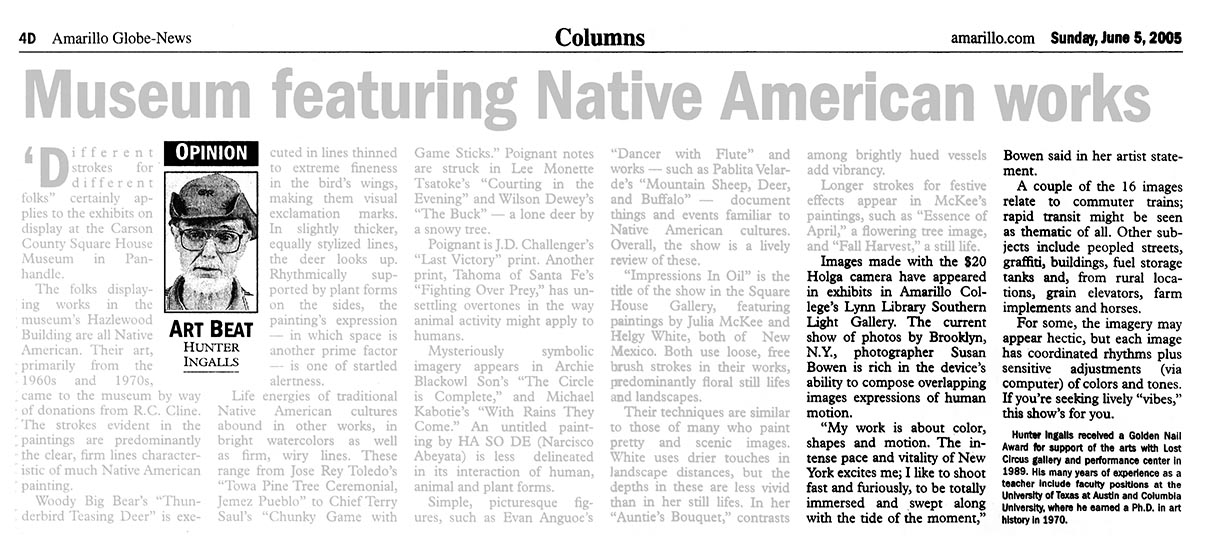Holga Direct Interview: August 30, 2010
Rick Behl: Here are the standard Questions for the interview.
1. Profile
Name: Susan Bowen
Location: New York, NY
Website/Portfolio: https://www.susanbowenphoto.com
Holga Cameras used: 120S, 120N
Photographers you admire: Robert Frank, Bruce Davidson, Todd Hido, Edward Burtynsky,
Bernd and Hilla Becher
2. How would you describe your photographic style?
I call my technique “overlapping exposure panoramas”. They are multiple exposures done by only partially advancing the film as I shoot. I will use about 1/2 of a roll as one image.
3. What inspires you in your work?
Industrial sites get my juices going the most, I like the sculptural-ness and monumental-ness of such forms. I also feed off of the energy of crowds in the city.
4. Where is or would be your dream photography location/shoot?
I would die to have free access to a power plant.
5. How long have you been using Holgas?
Since 2002.
6. What do you like about using Holgas?
Not many cameras allow you to do this technique…. so that, and their lightness. And that they use medium format film (vs. 35mm).
7. What films do you prefer using and why?
I use Kodak Porta 800 and 400 mostly.
8. What are your thoughts on the way Photography is progressing? (HDR, digital, web)
Things have changed so dramatically just in the short time I’ve been doing photography again. Most of the labs and darkroom rental places that were still flourishing 8 years ago are now gone, which is sad. The technology is great… I scan my negatives so from that point on I’m digital… so I love the amount of control you have with Photoshop… and that it is permanent (that you don’t have to redo the process with each print). Doing these prints in the darkroom was a nightmare (all the dodging and burning due to the uneven exposures)… especially in color where you have to work in complete darkness. So I appreciate the technology.
I am however real concerned about the impact the over-accessibility of image-taking and the ease of publishing…. everyone shooting anything and everything and posting hundreds of images all over the web. This overwhelming flood of mostly mediocre images dulls the senses and makes the appreciation of good photography, art photography harder. I also worry about the increasing rareness of the physical print; the vast majority of digital images get posted and that is that…. these images are not going to be preserved over time. That much historical documentation is going to be lost.
9. What kind of work/projects do you have lined up for the next 12 months?
I’m due for another trip to the Midwest.
10. Do you have any tips for aspiring photographers?
Using the Holga is all about spontaneity…. shoot fast, don’t think too much.
11. Anything else you would like to talk about? (Make up your own questions and answers)
Chance plays a big role in my work. I don’t know how my images are going to turn out; I like the element of surprise. I also feel that the multiple exposures capture my experience of the moment better than any single image could.
